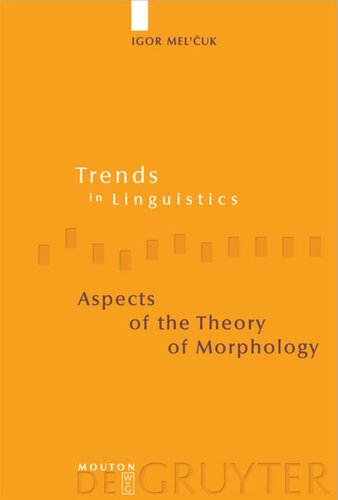

Most ebook files are in PDF format, so you can easily read them using various software such as Foxit Reader or directly on the Google Chrome browser.
Some ebook files are released by publishers in other formats such as .awz, .mobi, .epub, .fb2, etc. You may need to install specific software to read these formats on mobile/PC, such as Calibre.
Please read the tutorial at this link: https://ebookbell.com/faq
We offer FREE conversion to the popular formats you request; however, this may take some time. Therefore, right after payment, please email us, and we will try to provide the service as quickly as possible.
For some exceptional file formats or broken links (if any), please refrain from opening any disputes. Instead, email us first, and we will try to assist within a maximum of 6 hours.
EbookBell Team

5.0
70 reviewsThe book is dedicated to linguistic morphology and it contains a sketch of a complete morphological theory, centered around a discussion of fundamental concepts such as morph vs. morpheme, inflectional category, voice, grammatical case, agreement vs. government, suppletion, relationships between linguistic signs, etc.: the hottest issues in modern linguistics!
The book introduces rigorous and clear concepts necessary to describe morphological phenomena of natural languages. Among other things, it offers logical calculi of possible grammemes in a given category. The presentation is developed in a typological perspective, so that linguistic data from a large variety of languages are described and analyzed (about 100 typologically very different languages).
The main method is deductive: the concepts proposed in Aspects of the Theory of Morphology are based on a small set of indefinibilia and each concept is defined in terms of these indefinibilia and/or other concepts defined previously; as a result, logical calculi can be constructed (similar to Mendeleev's Periodical Table of Elements in chemistry). Then the concept is applied to the actual linguistic data to demonstrate its validity and advantages.
Thus, Aspects of the Theory of Morphology combines metalinguistic endeavor (a system of concepts for morphology) with typological and descriptive orientation. It reaches out to all students of language, including the border fields and applications.